The Roman Empire- How It Rose and Why It Fell

The Roman Empire: How It Rose and Why It Fell
Few civilizations have captured the world’s imagination like the Roman Empire. From its legendary founding in 753 BCE to its fall in 476 CE, Rome dominated vast swaths of Europe, North Africa, and the Middle East. Its roads stretched thousands of miles, its armies were unmatched, and its laws and culture influenced societies for centuries. Yet like all empires, Rome’s glory did not last forever. Understanding how Rome rose to greatness and why it eventually collapsed offers lessons about ambition, power, and human resilience.
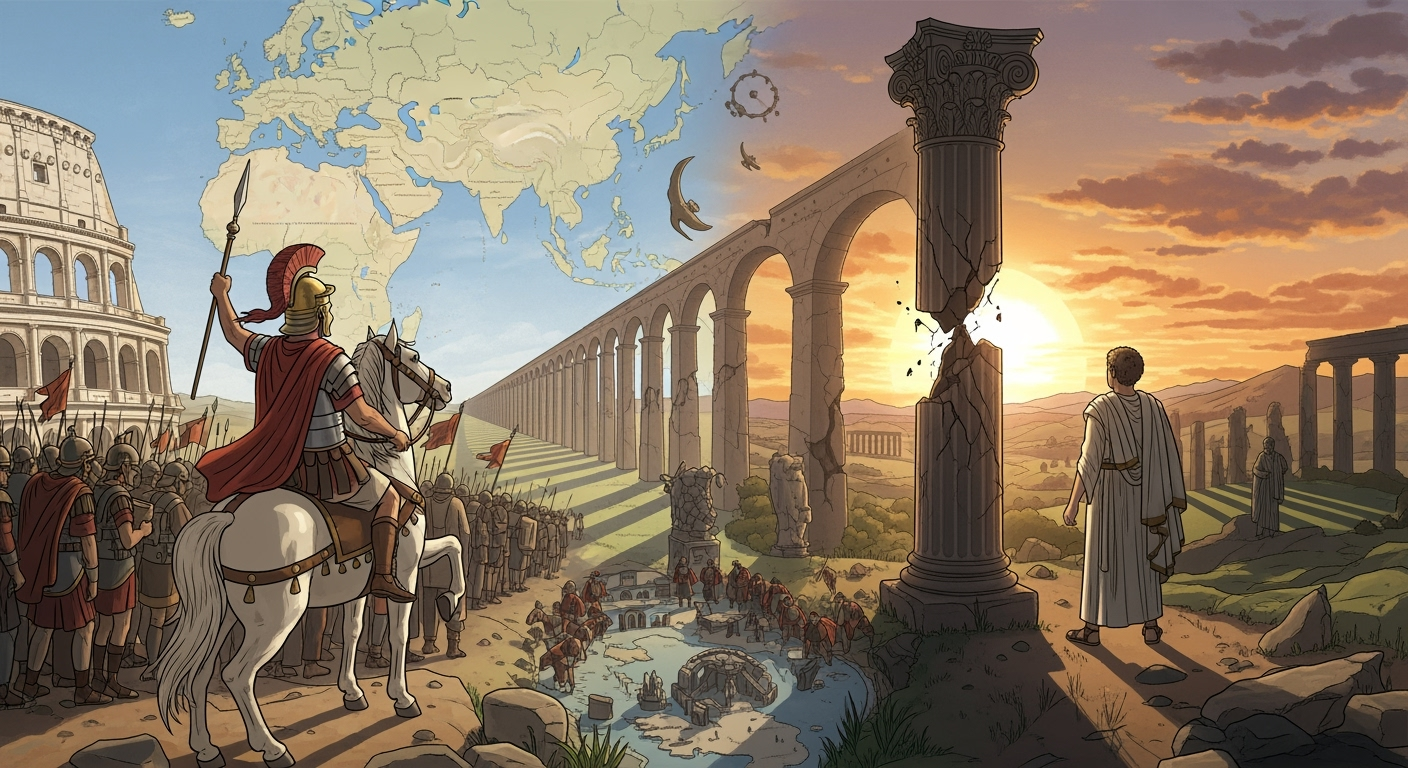
From Village to Republic
Rome’s beginnings were humble. According to legend, the city was founded by the twins Romulus and Remus. Archaeology suggests that by the 8th century BCE, small villages on the hills around the Tiber River began to merge into a single community. Over time, Rome transitioned from monarchy to republic, with elected officials and a Senate guiding governance.
The Roman Republic thrived on a system of checks and balances, at least in theory. Patricians, the wealthy elite, often dominated politics, while plebeians, the common citizens, fought for greater rights through assemblies and tribunes. This balance of power helped stabilize the growing city and allowed it to expand through both diplomacy and conquest.
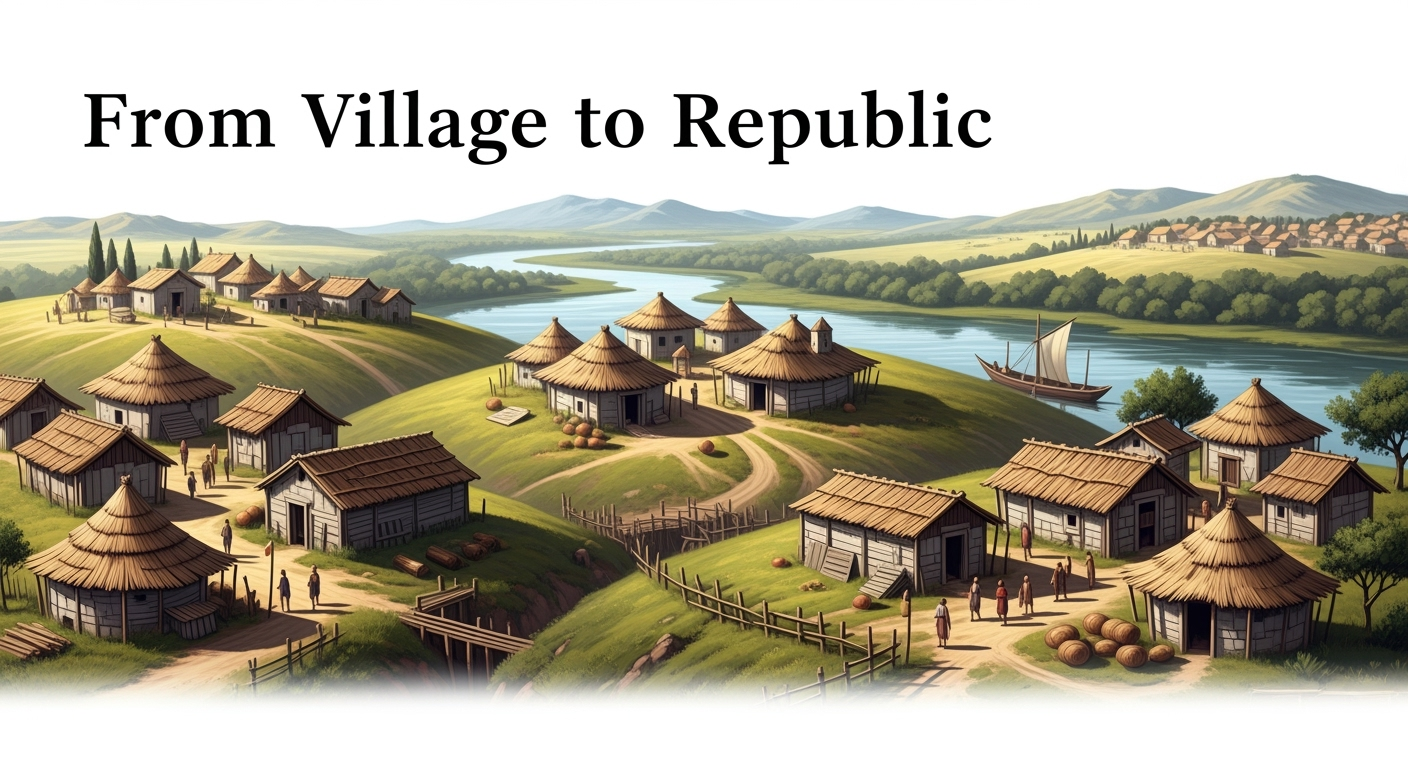
Military Might and Expansion
Rome’s greatest strength was its military. Roman legions were disciplined, well-trained, and highly organized. Soldiers fought in tight formations, relied on advanced engineering, and were supported by a vast system of roads that allowed for rapid movement across the empire.
Beginning with victories in Italy, Rome expanded outward. The Punic Wars against Carthage in the 3rd and 2nd centuries BCE brought Rome dominance over the western Mediterranean. Later campaigns pushed Roman control into Greece, Gaul, and eventually parts of the Middle East. By the 1st century BCE, Rome had become the supreme power in the Mediterranean world.
Conquest brought wealth, slaves, and resources, but it also created challenges. Vast territories required administration, and social inequality grew as elites benefited more than ordinary citizens. The seeds of Rome’s eventual decline were planted even during its greatest successes.
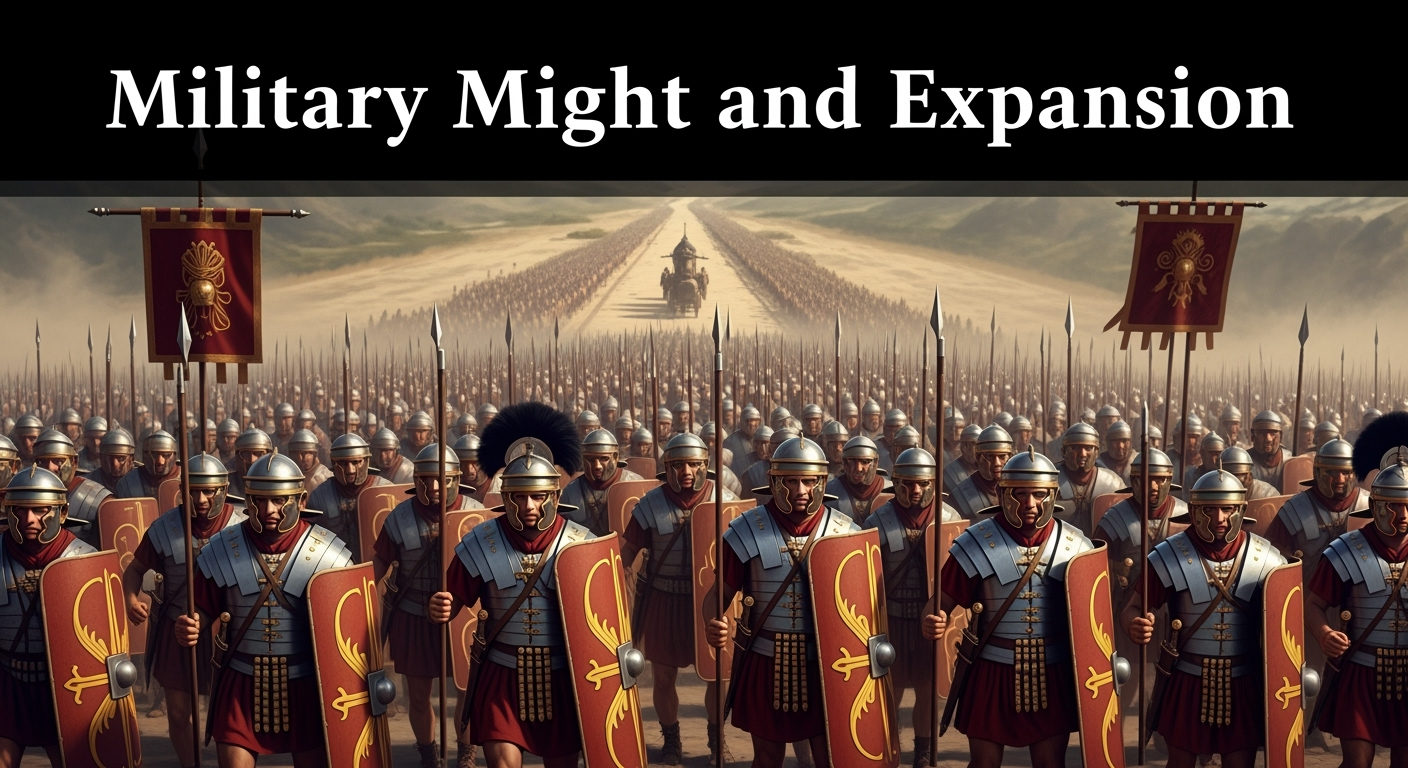
Julius Caesar and the End of the Republic
The late Republic was marked by political turmoil. Ambitious generals such as Gaius Marius, Lucius Cornelius Sulla, and Pompey used their armies to wield political influence. Civil wars broke out as rival factions competed for control.
One of the most famous figures to emerge from this chaos was Julius Caesar. A brilliant general, Caesar conquered Gaul and earned the loyalty of his troops. In 49 BCE, he crossed the Rubicon River with his army, defying the Senate and sparking another civil war. After defeating Pompey, Caesar declared himself dictator for life.
His concentration of power alarmed senators who feared the end of the Republic. In 44 BCE, a group of conspirators assassinated him on the Ides of March. Rather than restoring the Republic, his death plunged Rome into more conflict. Out of this turmoil rose his adopted heir, Octavian, later known as Augustus.
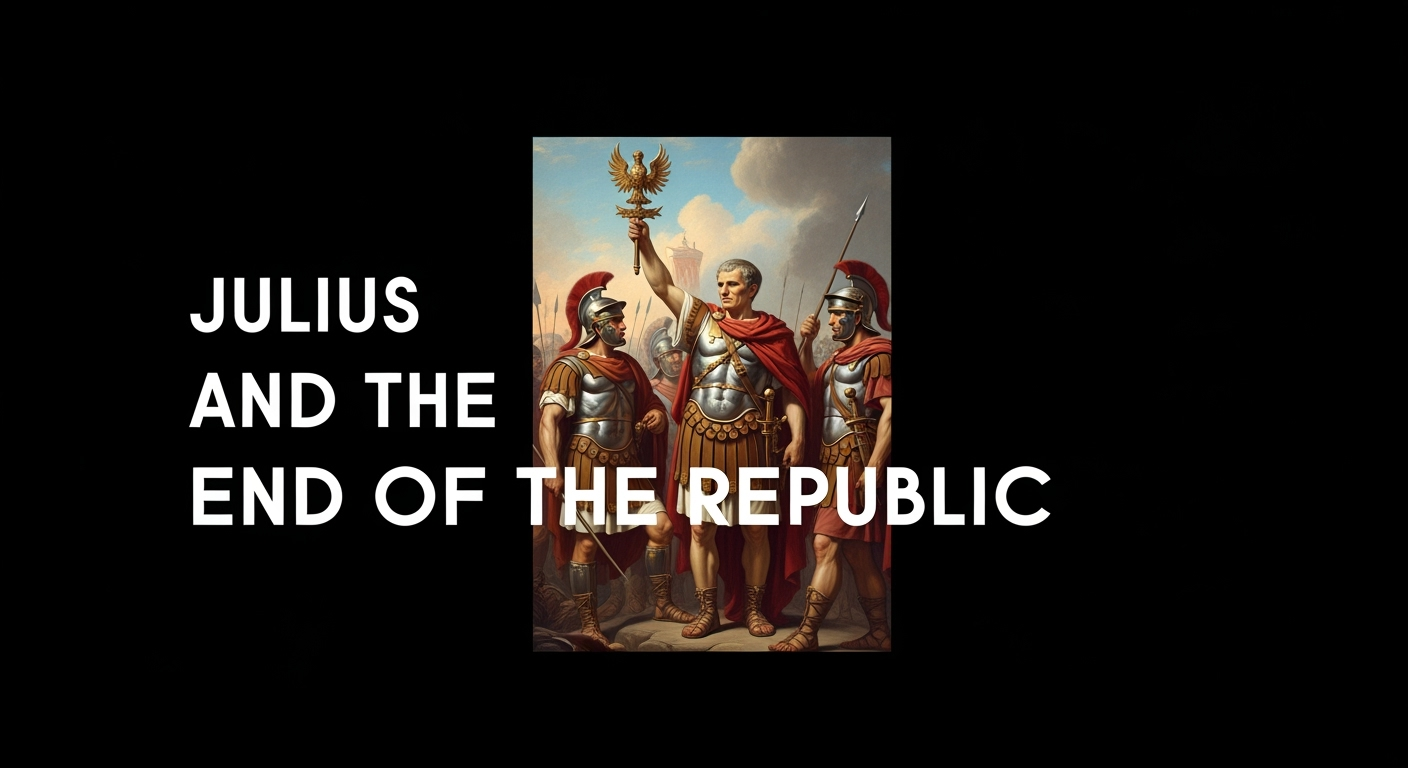
The Age of the Emperors
Augustus established the Roman Empire in 27 BCE, marking the end of the Republic and the beginning of imperial rule. As the first emperor, he balanced absolute authority with traditional republican institutions, giving the appearance of shared power while holding supreme control.
Under Augustus, Rome entered a period known as the Pax Romana, or Roman Peace. For about two centuries, the empire enjoyed relative stability, prosperity, and cultural flourishing. Roads, aqueducts, and monumental buildings such as the Colosseum showcased Roman engineering genius. Latin literature, from poets like Virgil and Ovid, thrived. Law and governance were standardized, creating systems that influenced Europe for centuries.
Not all emperors were wise or effective. Some, such as Nero and Caligula, became infamous for cruelty and extravagance. Yet the empire endured, largely because of its ability to adapt and because its institutions were resilient enough to withstand the flaws of individual rulers.
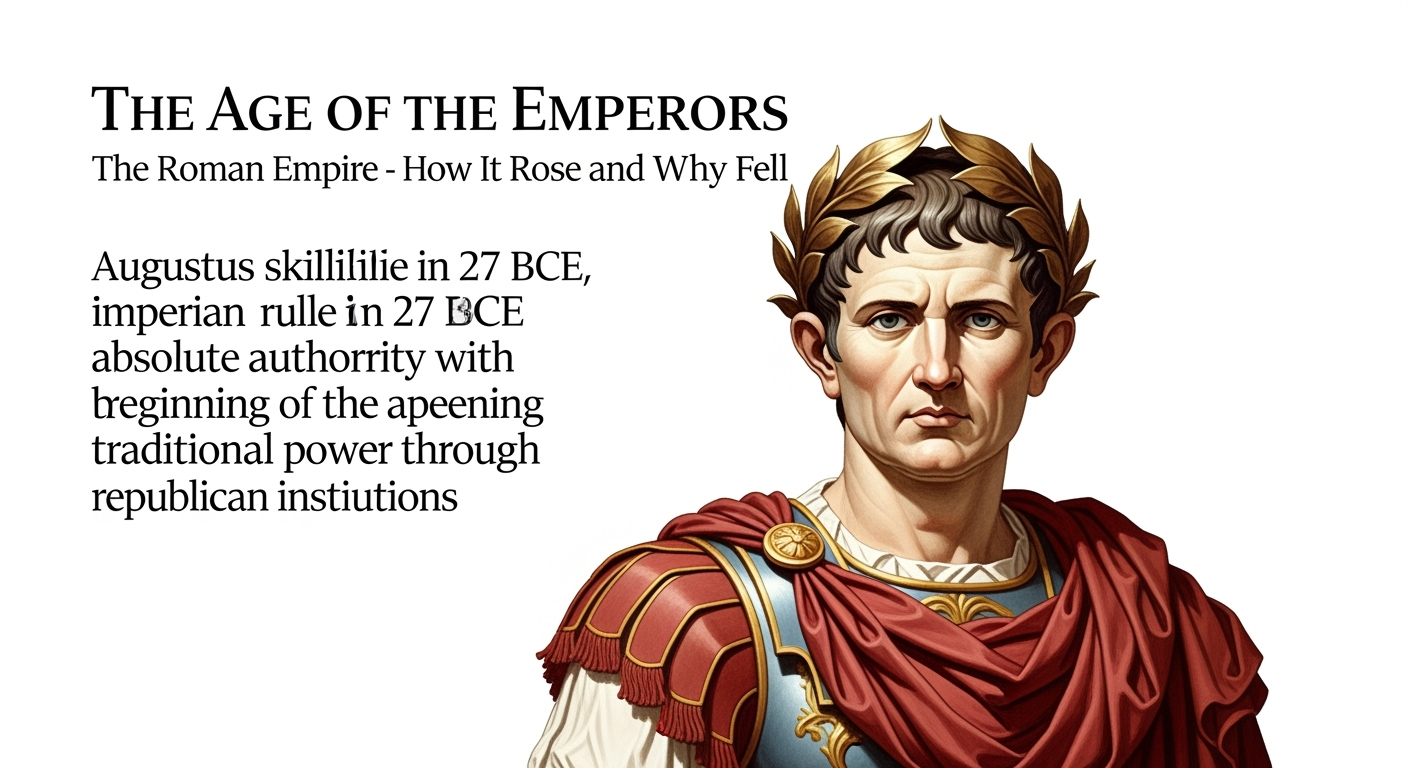
Challenges on the Frontiers
Rome’s expansion eventually slowed as it reached the natural limits of its territory. Defending such a vast empire was costly. The northern borders faced constant pressure from Germanic tribes, while the east was contested with the powerful Persian Empire. Maintaining armies on distant frontiers drained resources and stretched logistics to the breaking point.
Inside the empire, inequality and political instability continued to grow. Heavy taxation burdened peasants, while corruption undermined trust in government. Slave labor, once a foundation of Rome’s economy, created social tension and stifled technological innovation.
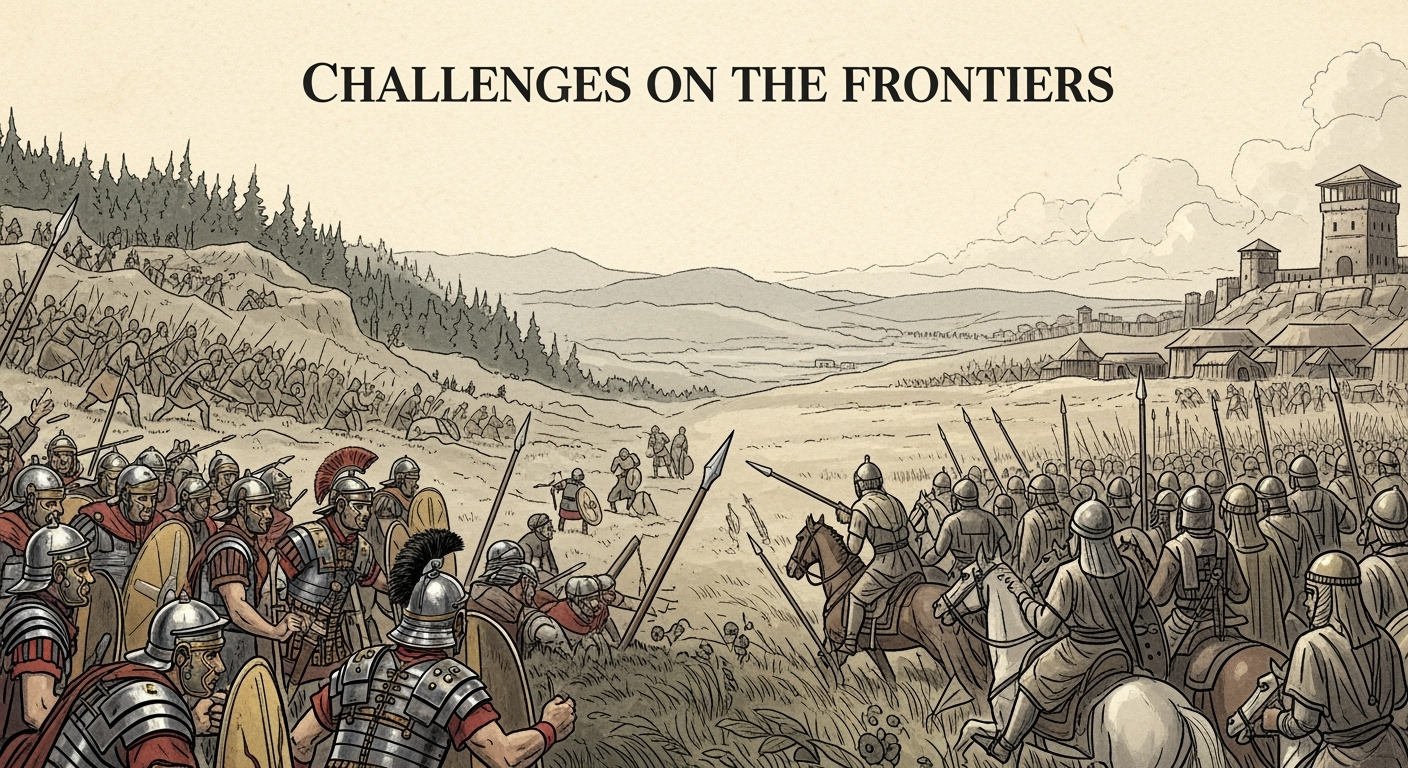
The Crisis of the Third Century
By the 3rd century CE, Rome faced a severe crisis. A rapid succession of emperors, many of whom were military generals installed by their troops, destabilized governance. Civil wars weakened the empire, and invasions by external enemies increased. The economy faltered under the weight of inflation, devalued currency, and declining agricultural productivity.
This period nearly destroyed Rome. Yet reforms by strong emperors such as Diocletian temporarily stabilized the empire. Diocletian even divided the empire into eastern and western halves, believing that separate administrations would make governance more efficient. While this division was meant as a solution, it foreshadowed the eventual permanent split.
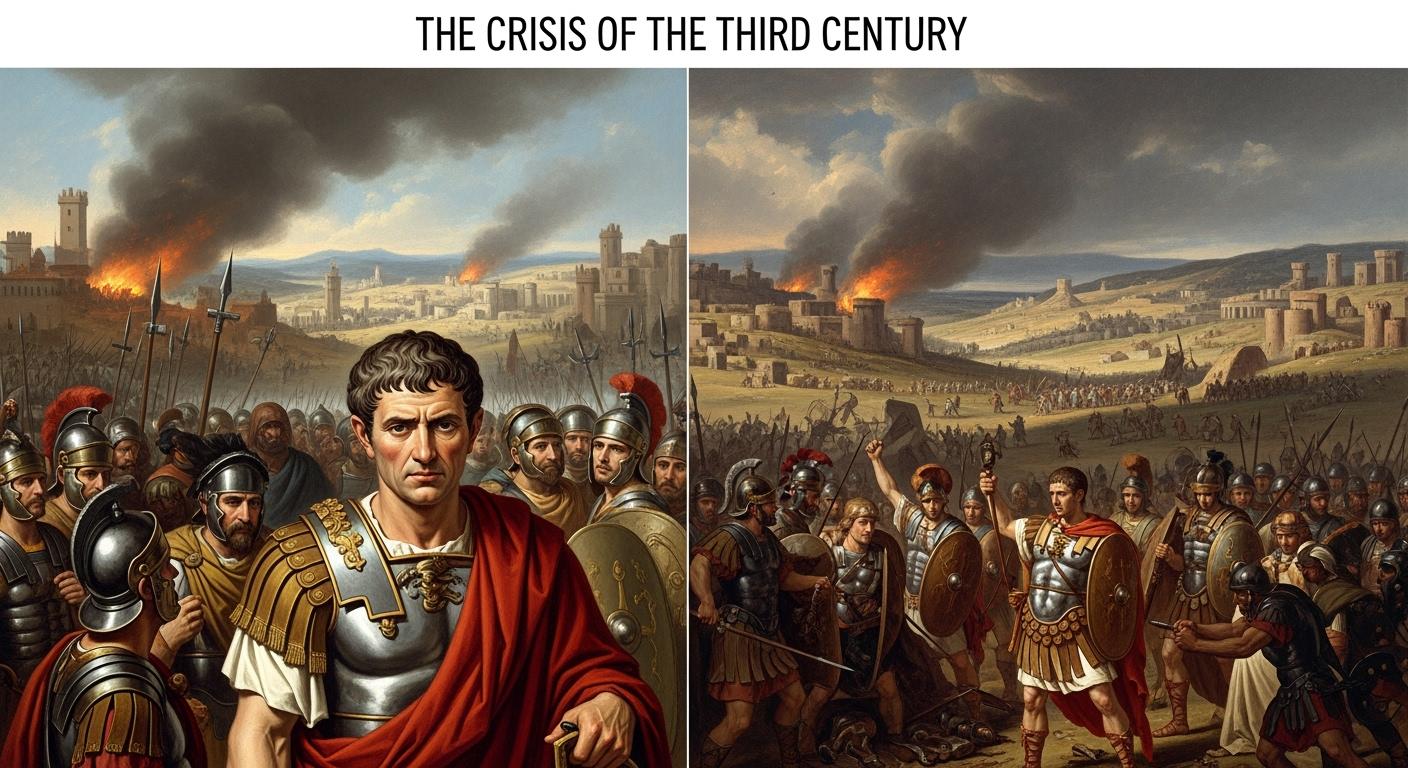
The Rise of Christianity
Another major transformation during this period was the rise of Christianity. Once a small, persecuted sect, Christianity spread rapidly across the empire, appealing to the poor and marginalized with its message of hope and salvation. In 313 CE, Emperor Constantine issued the Edict of Milan, granting religious tolerance and effectively legalizing Christianity.
Constantine later moved the capital to Byzantium, renaming it Constantinople. The city became the center of the Eastern Roman Empire, or Byzantine Empire, which would survive long after the fall of Rome in the West.
Christianity’s rise changed Rome’s cultural identity. Pagan traditions and imperial cults declined, while Christian institutions gained power and influence. Some historians argue that this shift contributed to weakening traditional Roman values, though others see it as a source of unity during troubled times.
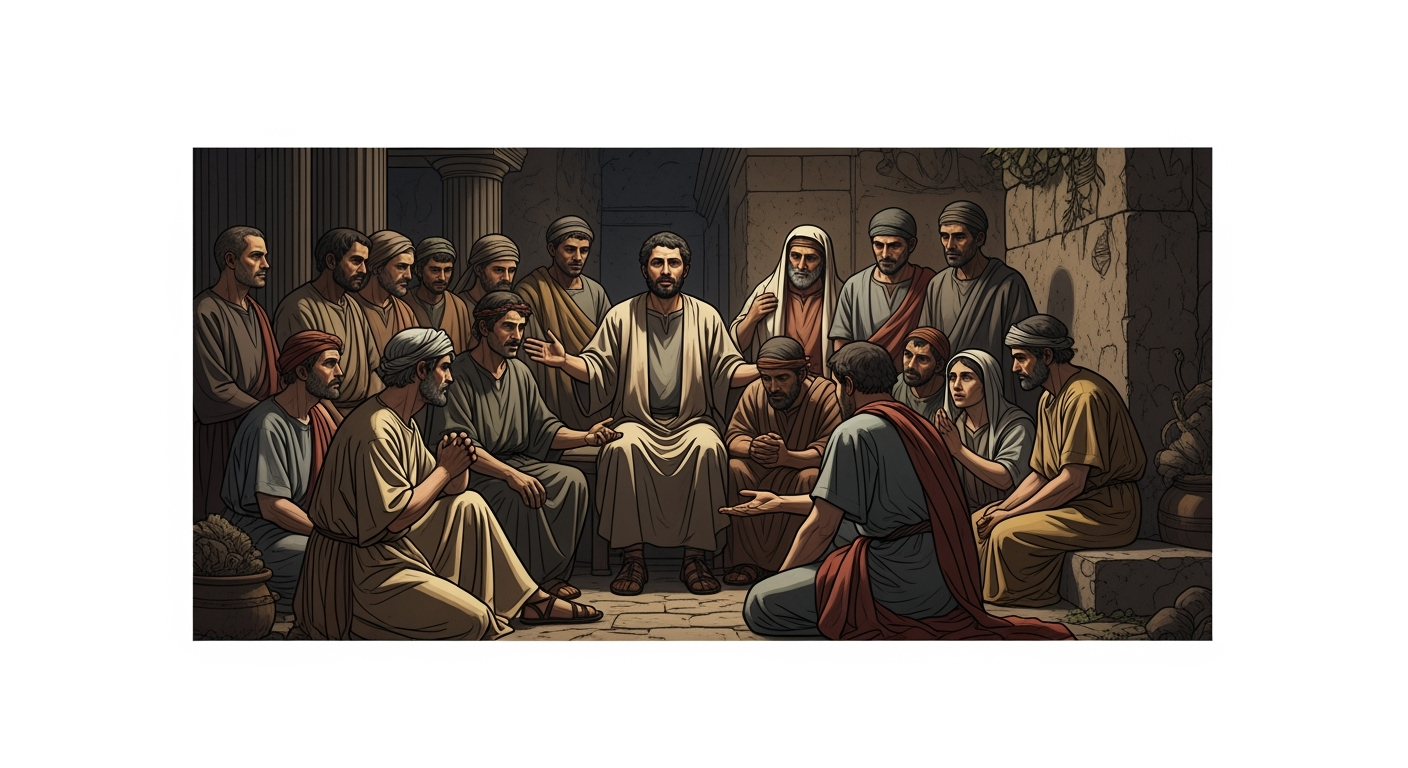
The Fall of the Western Empire
By the 5th century CE, the Western Roman Empire was in deep decline. Economic troubles, political corruption, and repeated invasions by Germanic tribes eroded its strength. The Visigoths famously sacked Rome in 410 CE, shocking the ancient world. Vandals later captured and plundered the city again.
The empire relied increasingly on mercenary soldiers, many of whom were Germanic themselves. Loyalty was fragile, and Rome could no longer defend its borders effectively. In 476 CE, the last emperor of the West, Romulus Augustulus, was deposed by the Germanic leader Odoacer. Historians often mark this date as the official fall of the Western Roman Empire.
The Eastern Roman Empire, centered in Constantinople, continued for nearly a thousand years until its fall in 1453. In many ways, the legacy of Rome never truly disappeared.
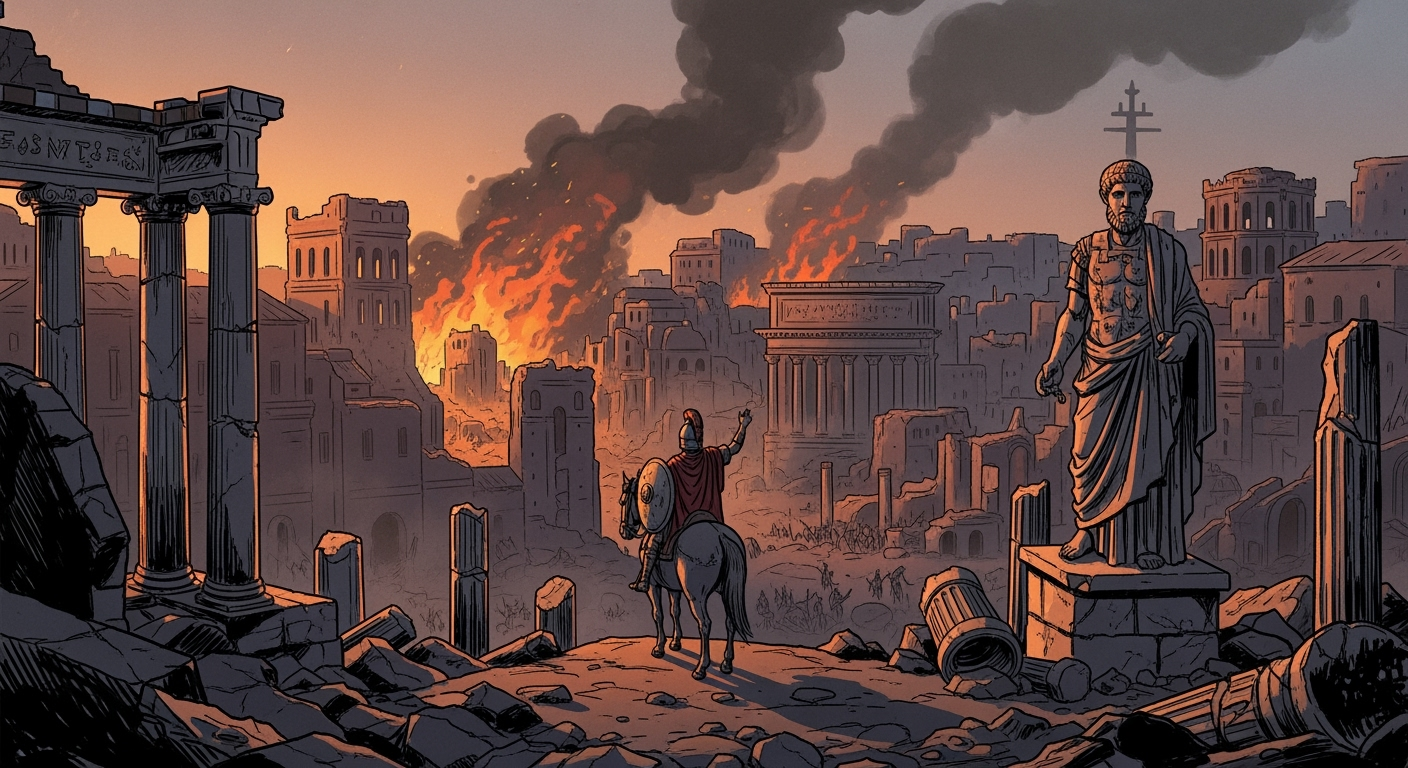
Why Rome Fell
Historians have debated the causes of Rome’s fall for centuries. Some emphasize military defeats, others economic decay, and still others moral decline. The reality is that Rome collapsed because of a combination of factors. Its vast size made it difficult to govern. Its economy was strained by overreliance on slaves and constant warfare. Political corruption eroded stability, while external invasions delivered the final blows.
Rome’s fall reminds us that even the mightiest powers are vulnerable when they fail to adapt. Yet its achievements in law, architecture, engineering, and culture endured. Roads built by Roman engineers still exist today. Concepts of citizenship and legal rights influenced modern democracies. Latin formed the basis of Romance languages, shaping how millions speak across the globe.
Rome’s story continues to fascinate because it mirrors the cycle of power seen throughout history. Empires rise, flourish, and eventually decline, but the legacies they leave behind can last far longer than their political structures. The Roman Empire may have fallen, but its influence still shapes the world we live in today.
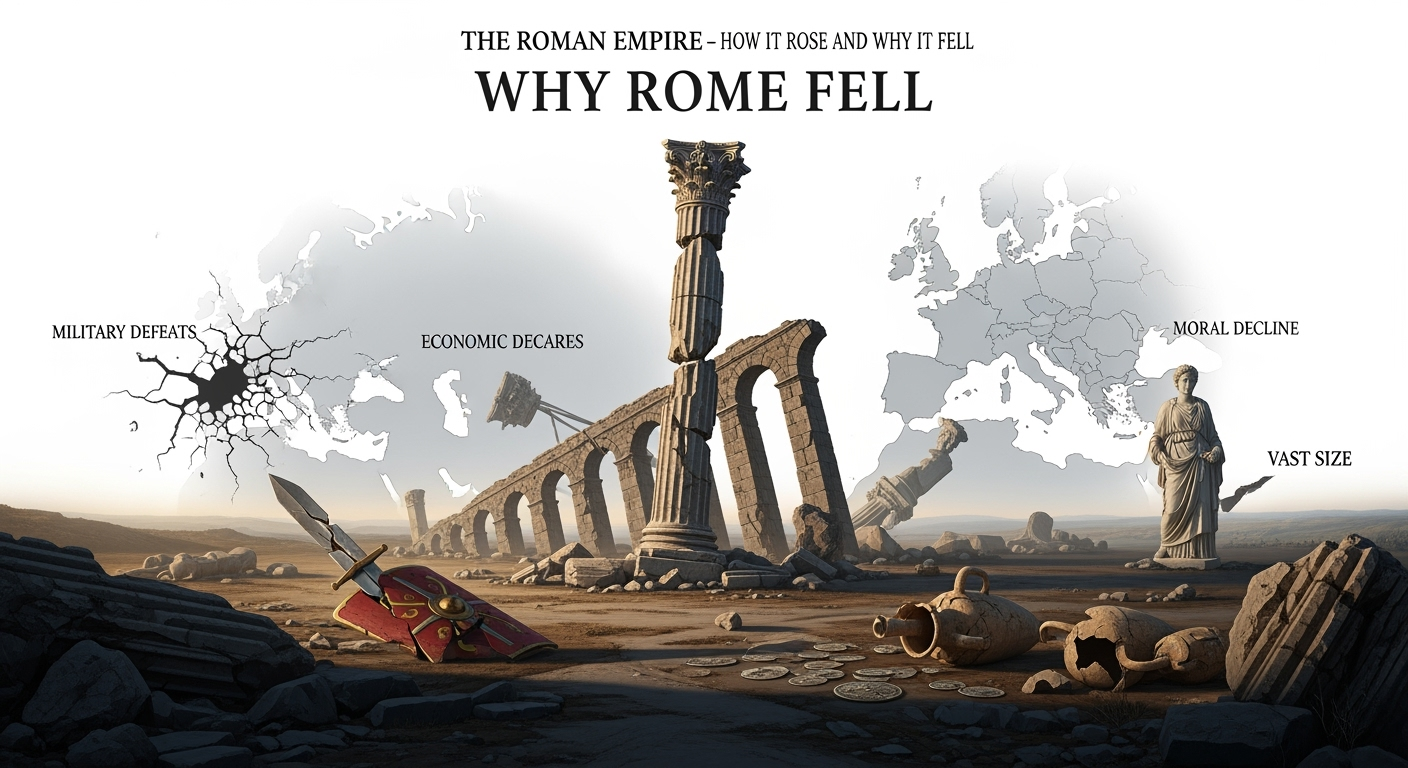
Disclaimer
This article is for educational and informational purposes only. While HistoryReveal.com strives for accuracy, historical interpretation may vary, and readers are encouraged to consult additional sources for deeper study.